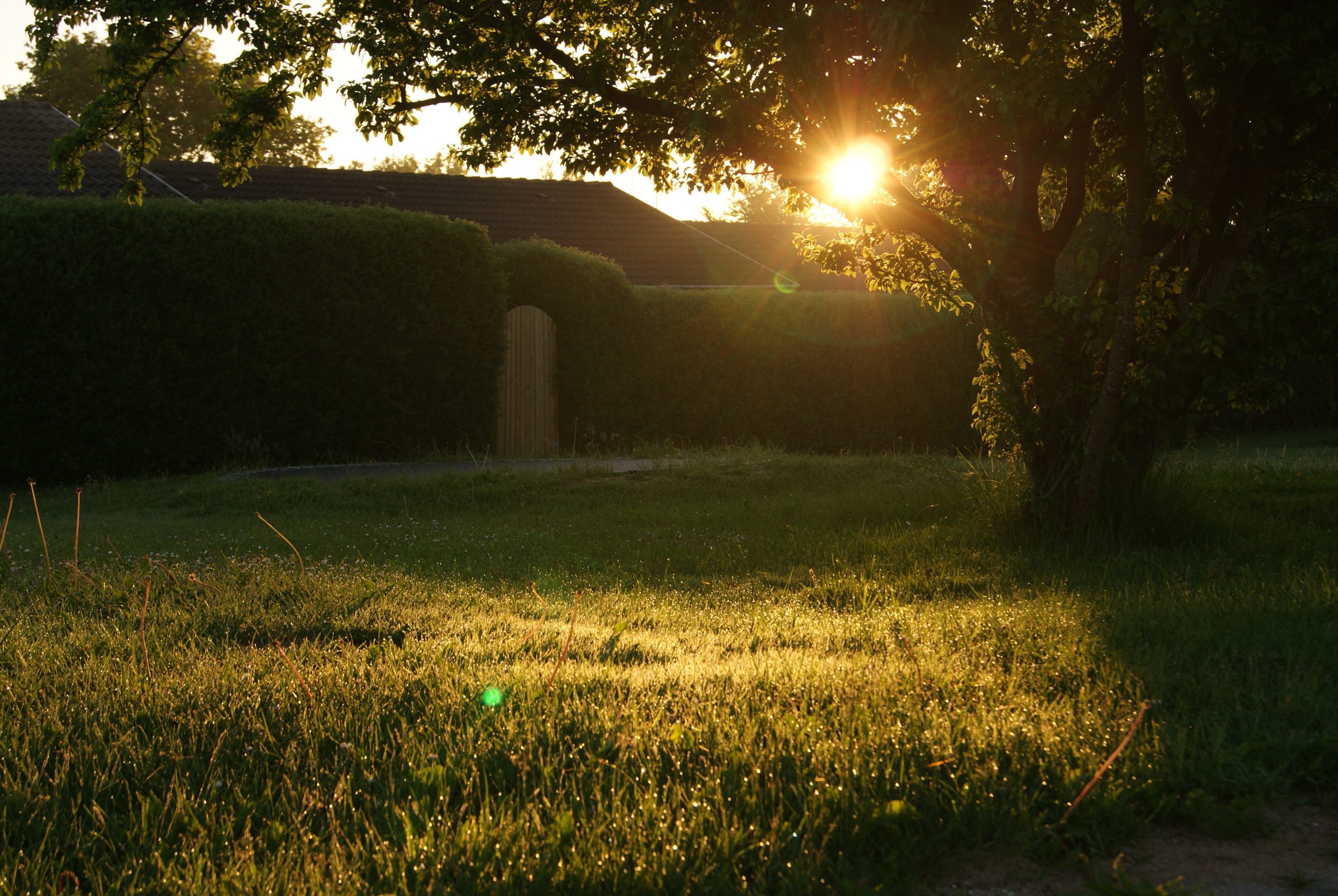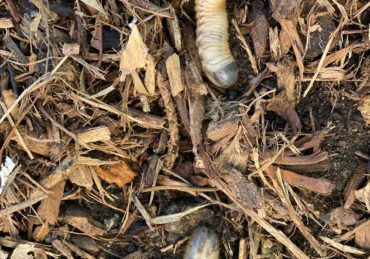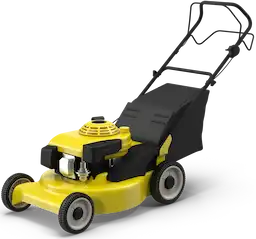To prepare your lawn for winter, grass should be cut to a height of 2 to 2.5 inches. This height is vital as it helps prevent snow mold and reduces moisture retention, lowering the risk of fungal growth. For cool-season grasses like Kentucky bluegrass, aim for 2 to 3 inches, while warm-season varieties like Bermuda thrive at 2 to 2.5 inches. It’s important to stop mowing 1-2 weeks before the first frost to avoid damaging frozen grass. Adhering to these guidelines guarantees your lawn is healthy and ready for the challenges of winter. Uncover more about maintaining a robust lawn throughout seasonal changes.
Why Cutting Grass to the Right Height Before Winter Matters
Cutting grass to the appropriate height before winter is crucial, as it not only prevents the development of snow mold but also enhances the lawn’s resilience against winter conditions.
Maintaining the correct grass height for winter—ideally between 2 to 2.5 inches—ensures that moisture is not trapped, reducing the risk of fungal growth. Furthermore, a shorter lawn minimizes the attraction of pests like voles, which can cause significant damage during colder months.
Proper winter lawn care involves adhering to the One-Third Rule to avoid stress on the grass. By taking the time to cut your grass before the frost, you promote better air circulation and sunlight exposure, both essential for a healthy lawn as it enters dormancy and prepares for spring growth.
Best Grass Heights Before Winter Based on Grass Type
Understanding the ideal grass height for different types before winter is essential for maintaining a healthy lawn.
Cool-season grasses, such as Kentucky bluegrass and tall fescue, require specific cutting heights to guarantee resilience against cold temperatures.
Warm-season varieties like Bermuda and zoysiagrass also have tailored needs.
Adhering to these guidelines not only prepares the grass for winter but also promotes peak growth as spring approaches.
Ideal Height for Cool-Season Grasses Before Winter
For cool-season grasses like Kentucky bluegrass, perennial ryegrass, and fescue, the optimal mowing height before winter is 2-3 inches. Maintaining this range supports photosynthesis, allowing the grass to store energy for root health during dormancy. Grass kept at this height also reduces the risk of snow mold, as shorter blades prevent excessive matting under snow and improve air circulation. Cutting these grasses too short can stress the plants and weaken their root systems, making them vulnerable to winter damage. Conversely, overly tall grass traps moisture and encourages fungal growth. By adhering to this ideal height, you promote a healthy lawn that withstands winter conditions and ensures a strong recovery in spring with vibrant, vigorous growth.
Ideal Height for Warm-Season Grasses Before Winter
For warm-season grasses like Bermuda grass and Zoysia, cutting to a height of about 1 inch before winter is ideal. This shorter height minimizes the risk of mold and winter damage by reducing moisture retention and preventing matting. These grasses enter dormancy in colder months, and keeping them short helps protect against cold-weather issues, especially in regions with milder winters. Shorter grass ensures better airflow and sunlight access, which prevents disease and keeps the lawn healthy until spring. Additionally, overly tall warm-season grass can become brittle and more susceptible to damage during temperature fluctuations. Maintaining this recommended height supports a smooth transition into dormancy and sets the stage for a vibrant, robust lawn as the warmer months return.
When to Stop Mowing Your Lawn Before Winter
As winter approaches, recognizing the appropriate time to cease mowing is crucial for lawn health.
Key indicators include dropping air temperatures and the grass entering dormancy, typically occurring 1-2 weeks before the first expected frost.
Monitoring these signs guarantees that the lawn is better prepared for the cold months ahead.
Signs That It’s Time for the Last Mow of the Year
Visual indicators can help determine when it’s time for the last mow of the year. When grass stops growing, you’ll notice significantly slowed blade length increases over a week or more. Grass that once needed frequent mowing will hold its height for longer periods. Additionally, the vibrant green color may start to fade slightly, signaling the transition to dormancy. This is especially true for cool-season grasses as they prepare for colder temperatures. Warm-season grasses like Bermuda and Zoysia may turn brown or straw-colored as growth creases. These signs indicate it’s time for the final mow before winter.
Preparing for the Last Mow: Tips for Healthy Winter Grass
The last mow of the season is a critical step in preparing your lawn for winter. Follow these mowing tips to ensure a healthy start in spring. Begin by gradually adjusting the mower blade height over the final few mowing sessions to reach the recommended winter height of 2-2.5 inches for cool-season grasses and about 1 inch for warm-season grasses. This prevents stress from a sudden drastic cut. Always mow when the grass is dry to achieve a clean, even cut and avoid clumping that can suffocate the lawn.
Before the last mow, perform debris removal by raking up leaves, twigs, and any other materials that could smother the grass or foster disease during winter. A clean lawn allows proper airflow and reduces the risk of mold or pests. Sharpen your mower blade to ensure it cuts cleanly rather than tearing the grass, which can leave it vulnerable to disease.
Finally, avoid leaving clippings after the last mow unless they are finely mulched, as larger clumps can mat and damage the lawn. Taking these steps ensures your lawn enters dormancy free of stress, protected against winter damage, and primed for the start of spring.
The One-Third Rule: Avoiding Shock to Your Grass
The one-third rule is a fundamental lawn care guideline that helps prevent stress and damage to grass. It advises against cutting more than one-third of the grass’s height in a single mowing session. Removing too much at once can shock the grass, weakening its roots and reducing its ability to photosynthesize effectively. This can leave the lawn vulnerable to disease, pests, and drought. Gradual cutting, especially during the growing season or before the last mow, allows the grass to adjust and remain healthy. Following the one-third rule promotes a resilient, lush lawn by encouraging steady growth and reducing unnecessary stress.
Leaf and Debris Cleanup for a Healthy Winter Lawn
Removing leaves and debris before winter is essential to prevent mold, disease, and issues caused by compacted layers that block airflow and trap moisture. Leaves left on the lawn can create a dense mat, fostering fungal growth like snow mold and smothering grass, which weakens roots. A clean lawn promotes better air circulation and reduces winter stress. If the leaves are dry and not overly thick, mulching them into the soil with a mower is a great alternative. This practice adds organic matter and nutrients, enriching the soil for healthier spring growth. Additionally, proper debris management ensures a resilient and vibrant lawn.
Common Questions About Cutting Grass Shorter Before Winter
Can I mow my lawn in the winter if it stays warm?
Mowing in winter, even during warm spells, risks damaging dormant grass by stressing roots and disrupting recovery. Grass needs rest to build resilience for spring growth. Winter mowing can also compact cold, wet soil, harming root health. It’s best to let grass remain undistrubed until active growth resumes in spring.
Is it bad to cut grass before a freeze?
Cutting grass before a freeze can cause stress and potential damage. Freshly cut blades lose moisture more quickly and are more vulnerable to frost, leading to browning or shock. It’s best to mow earlier, allowing grass time to recover before freezing temperatures, ensuring a healthier transition into winter dormancy.
What if I cut grass too short?
If your grass was cut too short before winter, it’s more vulnerable to stress and frost damage. To minimize harm, ensure a clean lawn by removing debris, avoid heavy foot traffic to reduce soil compaction, and apply a light layer of mulch or straw for insulation. Proper care supports recovery in spring.
Additional Winter Lawn Care Tips
Effective winter lawn care involves more than just mowing. Applying a slow-release fertilizer in late fall or early winter provides essential nutrients to strengthen roots during dormancy, ensuring a healthier lawn come spring. In warmer regions where warm-season grasses thrive, overseeding with cool-season grass varieties can maintain a green lawn through winter while protecting the soil. Monitoring for pests like voles is equally important; these rodents can damage grass by creating tunnels and feeding on roots under the snow. Prevent infestations by removing debris, which provides shelter for pests. Additionally, avoid heavy foot traffic to prevent soil compaction, and address any signs of fungal diseases promptly. Combined, these winter lawn care practices help grass withstand the cold and prepare for vigorous growth when temperatures rise. A well-maintained lawn during winter ensures a lush, green, and resilient yard in the upcoming growing season.
Final Thoughts on How Short to Cut Grass Before Winter
Setting the correct grass height for winter is essential for a resilient, healthy lawn. Proper mowing minimizes disease risk, protects roots, and ensures the grass thrives through dormancy. By following these guidelines, your lawn is better prepared to endure winter conditions and emerge, lush, green, and ready for vigorous spring growth.





